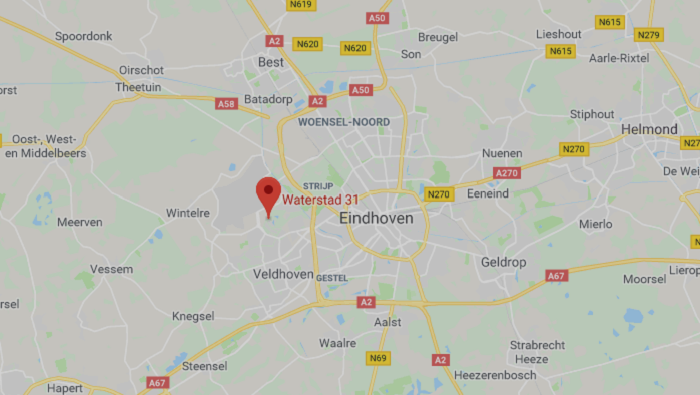Immersive Calibration PRO One-Click Auto-Alignment
Immersive Calibration PRO One-click auto-alignment
Did you know that Fly Elise-ng Immersive Calibration PRO software has one of the most advanced functions for single-click auto-alignment and edge-blending using one or more cameras for projector scanning.
But did you know that Immersive Calibration PRO also supports numerous external devices for automatic screen detection and camera alignment?
In this blog we will present a workflow for alignment of realignment of a multi projector setup on a curved screen using a camera and external LEDs attached on the projection screen. Using this workflow, a minimal manual setup is needed during the initial alignment and no manual actions are needed during the consecutive re-alignments. A single click can be used to automatically align and camera and the projectors within a couple of minutes. This opens the possibility to re-calibrate the projection frequency to alway ensure perfect edge-blending even in harsh projection environments where the projectors and camera positions are susceptible to vibrations and can change the positions and orientations.
For this blog we will use a projection setup with 3 projectors on a double curved screen shape with a single camera for auto-alignment. Additionally, we will use one of the available “screen scanners” interfaces of Calibration PRO to drive an external hardware driver for LEDs or laser theodolites.

The Calibration PRO software provides plugins for PoKeys devices, ModBus devices, as well as a generic and open interface for any external hardware that can accept TCP/IP connection or even more high level HTTP/REST interface.
We will use a very affordable PoKeys network device and a self made mesh of 8 wihte 12 volts LEDs. 8 outputs of the PoKeys will drive 8 relays to turn the LEDs on or off individually.



All the 8 LEDs will be positioned on the edges of the projection screen like shown below:

Start Calibration PRO – Server and create a new project for camera scanning.

Setup configure the projection screen for 4 columns and 2 rows

Configure the camera view as “Mapped to reference points (full)”. This will make it possible to automatically map the screen in this camera view using the LEDs positioned on the projection screen.

Go to the Menu Scanners/ScannersManager and select the PoKeys based device from the list of the scanners. On this device we configured the outputs 1 till 8 to turn the connected LED on and off. Select the number of outputs to 8. The outputs can be given a custom name if needed. For this we will leave the names to the default OUT1, OUT2, etc. Use the AllOn, AllOff buttons to test if the device is properly connected and functioning.

Now that the scanner is configured and enabled, we will define the 3D reference points that will be represented by each LED.
Open the Screen settings window and click on the top-right icon “Screen reference points”. A new window opens to define the reference points and associate them to a scanner LED.

Press the + button to add the points from the screen rows/columns definition. Select the top 3 reference points, middle 2 and the bottom 3 reference points, according to the position of the LEDs on the screen.

Then select each reference point and click on the bottom left icon to associate this point to the scanner LED. Repeat this for all 8 reference points.

The next step is to select the camera view and add all the reference points to be scanned in this camera view.


Double-click on each point in the camera view and position the point approximately in the camera image where the LED is positioned on the screen. It is not needed to position the point accurately, as long as the rectangle around the point encloses the area of the LED on the screen.

The last step of this setup is to configure the scanning to scan all LEDs at once (turn them on and off at once). Go to the File/Advanced screen and make sure the Reference points scanning method is set to “All”. The size of the rectangle around the reference point can also be changed to increase or decrease the “search area” for the scanner to look for the LED during the scanning.

That is all. We have finished the initial preparation and we are ready for automatic scanning of the projection screen and the projectors with this camera.
Press on the “One click recalculate button on the top-right corner. This will start the automatic scanning of the screen and the projectors on the screen.

The screen PoKeys scanner will turn the LEDs on and off and the camera will map the projection screen before the projectors are scanned one by one.

After the scanning is completed, the reference points are accurately positioned on the LEDs on the screen and the projectors are perfectly aligned and edge-blended.


Now, if for whatever reason the projectors position or orientation changed, or the camera position changed, then the edge-blending will be misaligned and a recalibration is needed.


Just use the single click Recalculate button to scan the projection screen and all projectors automatically. In a couple of minutes, the software will calculate and optionally export the calculated auto-alignment and the projection is ready to be used again.


For more info about our open scanners interface and how to use this single button recalibration, contact us on our support email address support@elise-ng.net
We`re here to help!

Office
Waterstad 31
5658 RE Eindhoven
The Netherlands
Hours
M-F: 8am - 10pm
S-S: Closed
Call Us
+31 40 7114293
Support
support@elise-ng.net
